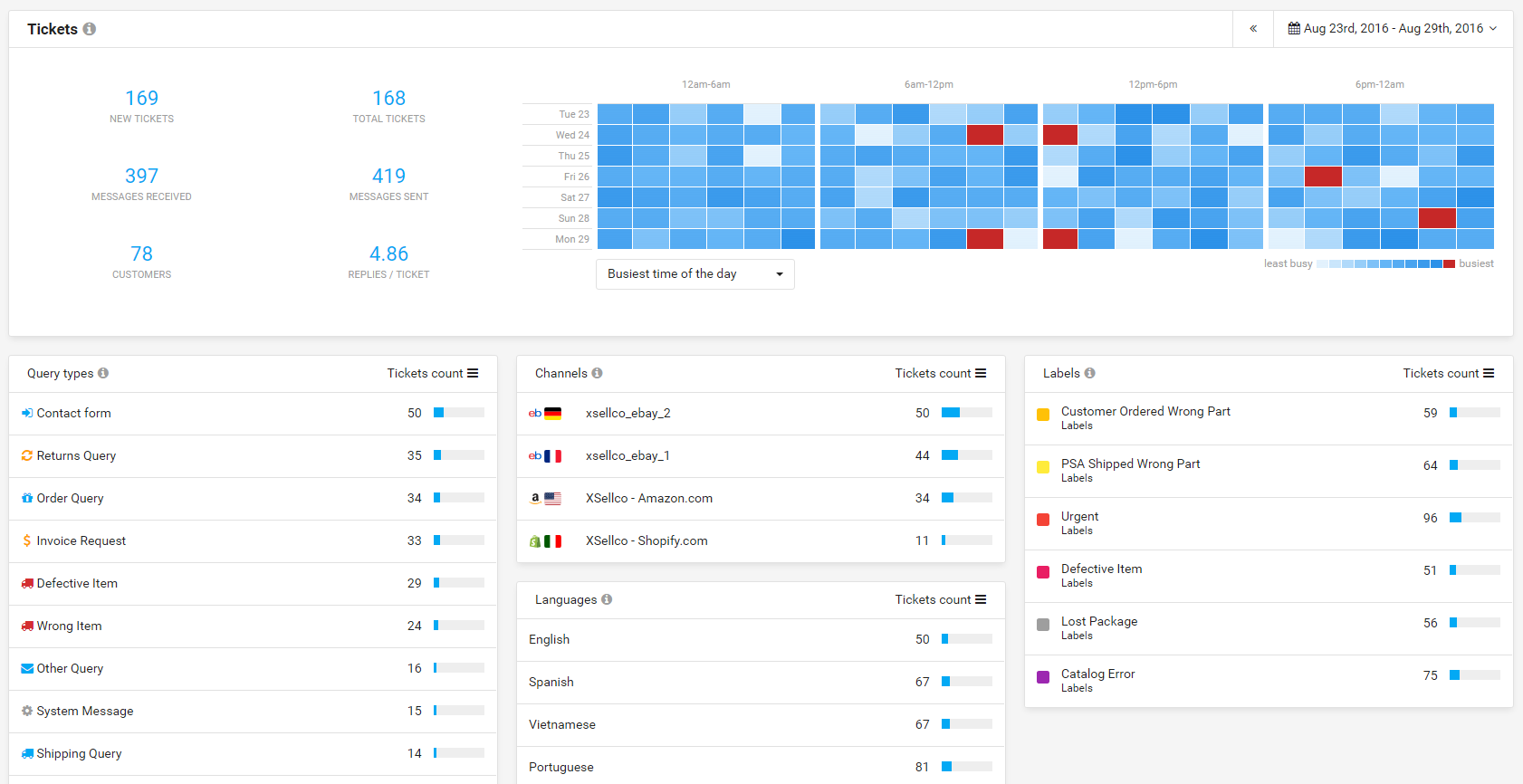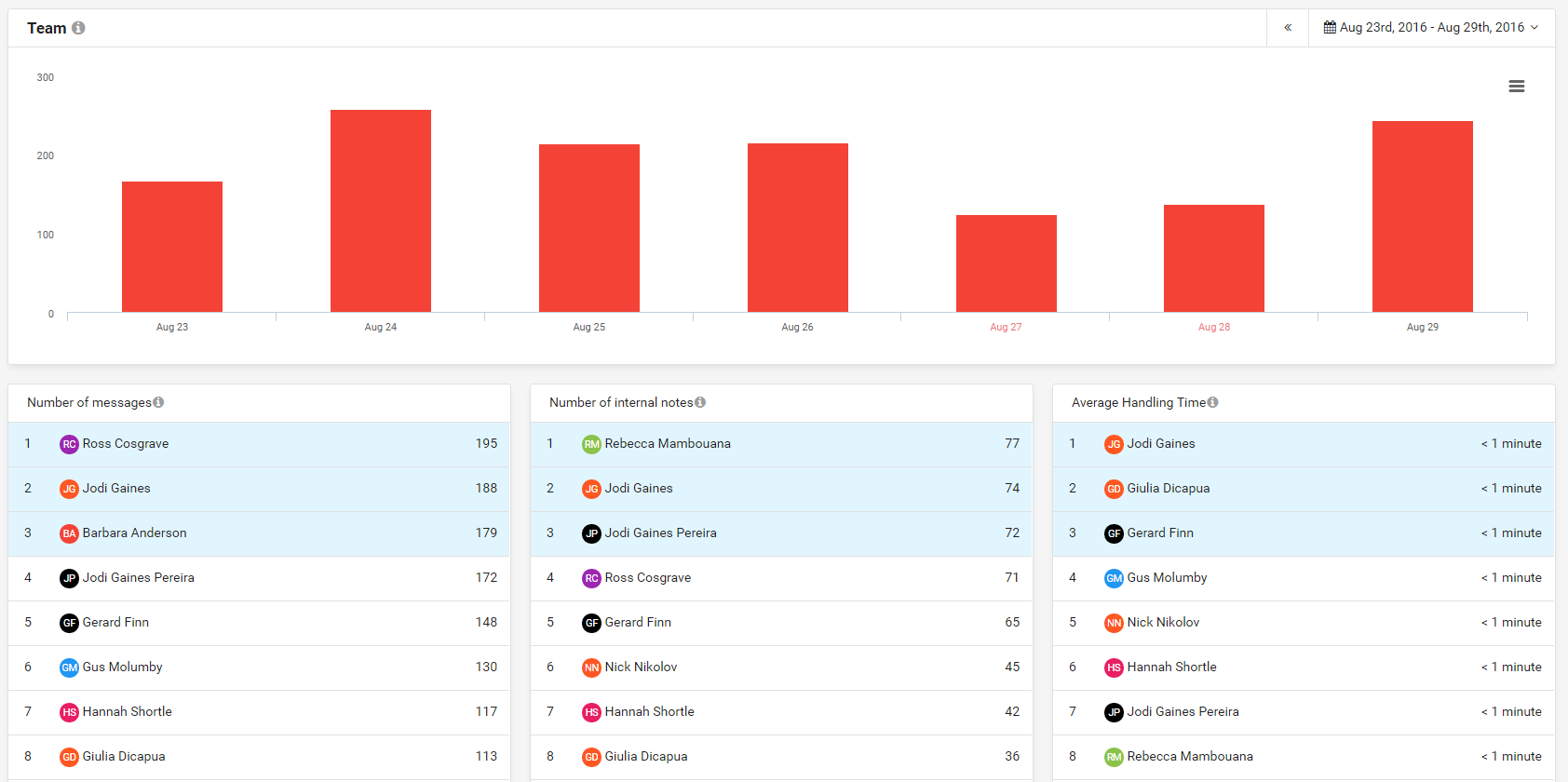Customer support agents are the voice of your business.
They speak to the people who buy your products every day. They know the customer inside out – their most common queries, items on their wish lists and the biggest issues. Most importantly – they know how to solve the common issues and make your customer happy, quickly.
But the heroes of this story can’t be expected to do everything on their own.
In fact, you could be under-utilizing the potential of customer support as a driver of sales, simply by not giving your team the tools to help them do their job. To succeed as an online seller, being able to scale quickly is crucial. That doesn’t just mean scaling your sales – but scaling how you support your customers too.
This is a cautionary tale as much as it is practical advice. If you’re growing fast, and you’re still managing queries from Amazon, eBay and your website separately, you’re going to hit boulder-sized problems down the road.
To know that your customer support agents need saving, you first need to be able to identify that your agents are in need of help in the first place.
The signs of a drowning support agent
Some of the common symptoms a customer support agent drowned in queries may experience include:
- Ever-increasing average response times
- Poor average handling times
- Drop in morale
- Missed sales / low repeat sales
Each of these issues are invariably linked, and they can harm your business’s performance if you don’t address and resolve them quickly.
Ever-increasing response times
This is the first and most obvious sign of a drowning support agent.
The queries are building up, your agents are taking longer to respond and your customers are getting agitated.
The likes of Amazon and eBay value a seller’s response times for a very valid reason – they are the key to a positive customer experience. If you don’t know what your average response times are, then you’re really in trouble (but don’t worry, your answer is further down).
Poor average handling times
If your average response times are suffering, then unfortunately this won’t be an isolated issue.
Average handling time and response times are intrinsically linked. If your agent is slow to respond, then he or she will most likely be slow to resolve the issue too.
Average handling time refers to the average time your agent takes between going from responding to a ticket, for the first time, to resolving the issue.
This point in your communication with customers is crucial, as it’s most probably the place where the customer will choose to buy from your store or not. That brings us to repeat sales.
Missed sales / low repeat sales
The longer it takes your support team to resolve a query, the more likely a customer will decide to take their business elsewhere.
Slow customer support will damage your sales. Great customer support will boost them – it’s as simple as that.
Online auto parts seller Micksgarage told us they generated an uplift in sales from marketplaces thank to their efficient customer support process – which highlighted the key role customer support plays in the sales process.
The longer it takes your support team to resolve a query, the more likely a customer will decide to take their business elsewhere.
Drop in staff morale
This is where your customer support issues are compounded. Your staff are losing motivation because as hard as they try, they can’t seem to get over the mountain of queries.
As a result of their decreased motivation, they’re not doing their job as well as they could be. Their investigations into a customer’s issue might become more rushed, their responses to customers may lose their usual friendliness, and they become disengaged with their work.
But this is all completely preventable. This is how you fix a problematic support setup.
How to save your support agents from drowning in queries
There are three key steps that will save your customer support agents from a mountain of queries, and save your customers from waiting days for a response too.
- Get everyone on the same page
- Predict the oncoming waves
- Work as a team
Get everyone on the same page
Whether you manage all your customers’ queries yourself or have a team of agents working on them, you can still encounter the same time-consuming problems.
The first step to an efficient customer support team, is to have everyone working from the same dashboard.
Don’t manage your customer support tickets in separate locations – this is a recipe for a disorganised, time-consuming disaster.
Are you selling on multiple channels like Amazon, eBay and a webstore? Managing customer support from each of these channels separately is one of the biggest time-wasters for any sales business.
We’ve spoken to sellers like North Laine Accessories, who used to have a multilingual support agent for each eCommerce channel – and they said that still didn’t provide them with a long term solution.
Hiring more staff to spend more time on managing separate channels and dramatically increasing your wages in the process is not a sustainable way to scale customer support. If you’re receiving more customer queries than ever and your agents are literally drowning in them, that doesn’t mean you need more hands on deck. It means your agents don’t have the right tools available to them to manage more tickets in less time.
Help them get one view of the customer by managing customer queries from all of your marketplaces and website into one central location.
By getting everyone working from the same place, they can start working as a team.
Predict the oncoming waves
Response and resolution times are key metrics for any online seller, especially if you sell on marketplaces. Amazon factors in your response times when awarding the coveted Buy Box, while your customer support activity is essential to become an eBay Top Rated seller.
Once you have all your tickets in the one dashboard, xSellco Fusion will show you how your support team is performing and where they need more help.

You can review your performance down to an hourly basis – so you can see the times of the week that need the most support.

You have a number of options to view volumes by the hour, including sent messages, active agents, busiest times of day and more. This will allow agents to combat the busiest times, and design workflow around these active periods.
By identifying the patterns in your weekly customer support flow, you’ll be able to plan for the most regular busy days and times. This empowers your team to stay on top of customer query volumes.
Work as a team
If you have a team of support agents, it’s important to see how they work. For example if you have an agent who answers the most queries, that person might be able to teach your other agents how to answer as efficiently as possible.
Also, if certain agents have great average handling times, they can show their teammates how they resolve issues quickly – helping to increase overall team performance.
Or, see the agents who are communicating internally most often with internal notes – helping their teammates by providing additional information that will help answer the query.
In xSellco Fusion, this is all possible. In the image below, you can see the number of tickets handled by day, with the number of messages, internal notes and average handling times all broken down by agent.

This information will help you see your whole team’s performance, improve how they work, see the most productive days and plan for predicted busy days.
Customer support for eCommerce can be so much easier. You can save your customer support agents today by providing them with the right solution to help them succeed at their individual roles – and as a team.








